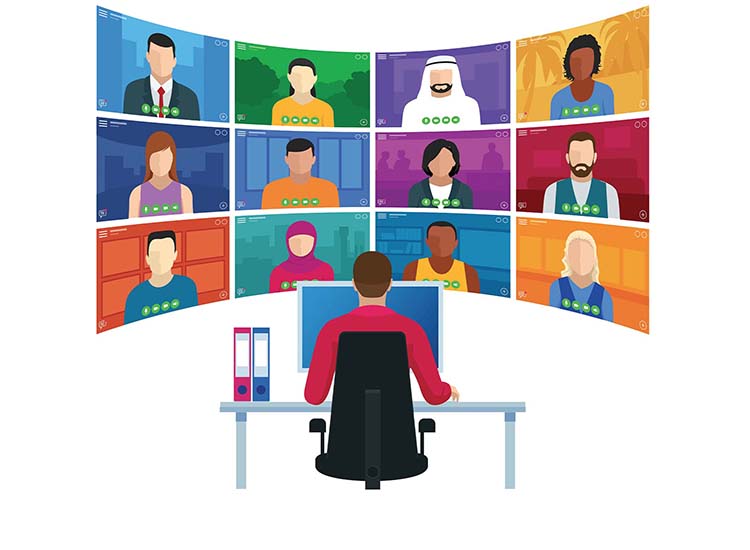Covid-19 communications strategy
COVID-19 has impacted business in unprecedented ways, and staff and customers are understandably nervous about their return to the “new normal”.
In addition, decisions announced in haste by top brands such as Sports Direct, Virgin Atlantic, Travelodge and Wetherspoons have been a disaster in terms of reputation and customer loyalty. Others, small and large, discovered too late that they did not have a robust or even any semblance of an effective Crisis Communications Plan. They struggled to communicate quickly, clearly and effectively with stakeholders and the media, resulting in misunderstandings, a social media backlash and a breakdown of trust.
The pandemic has also revealed major shortfalls in the way organisations communicate. However, it has allowed them to experiment with different ways of keeping connected even when staff are furloughed or remote-working and business cannot operate as normal.
Staying connected
Despite the gloom, getting to grips with Teams, Zoom, HouseParty and other video platforms has provided much-needed humour and new ways of keeping everyone on board and up to date on how things are and will change. There has been a massive shift in mindset and staff are appreciating a new level of engagement and emphasis on community and collaboration. Return-to-work planning needs to consider this shift towards more digital engagement – particularly as more employees will opt to continue to work remotely. Equally, posters, emails, intranet, social media, FAQs and the latest official advice pertaining to your sector are all part of the comms mix.
What needs to be said
It’s good to talk – and transparency, reassurance and authenticity are key to any successful communication regardless of whether or not there is a crisis. Think about what YOU would want to know and respond to those concerns in advance by clearly and simply explaining what safeguards and preventative measures will be in place and how they will work with regards to fears over job security, travelling to work, monitoring, cross-infection and visitors.
Weekly briefings should include a message from the CEO and/or other senior managers – and don’t forget to allow for two-way conversations. Employees will appreciate their bosses’ visibility and responses, and some of the best ideas for recovery will originate from staff who also have a vested interest in their organisation’s success.
Getting the tone right is more difficult
Empathy and approachability are replacing more formal and corporate styles of messaging. Some organisations will have to move quickly to develop and achieve a successful balance. No one likes rules, but humour, clarity and facts about why and how things are being done will go a long way to create acceptance, community and enhanced teamwork across the board.
There should also be space for people to express their fears and how they are coping, and a mechanism for quick, sympathetic and practical responses.
All this needs to be clearly spelled out publicly on your website to provide reassurance that everything possible is being done to ensure safety and welfare when back in the workplace.
New skills needed
Such change means new communication and IT skills are needed, particularly for senior staff who need to demonstrate leadership through appropriate communication – whether verbal or non-verbal. Training in body language and presentation skills, as well as the ability to explain things succinctly, appropriately and in a way that will resonate with staff and other stakeholders is essential.
They may also need help in working out which communication platforms suit them best, and how to improve with the ones they are not comfortable with, such as video. They don’t have to be media superstars; thought leadership is effective when being human and real. Practice in a safe learning environment will be of huge benefit to them, their colleagues and the wider organisation.
Staff will also gain personally and professionally from learning how to communicate confidently through key messaging, presentations and written communications.
Crisis communications strategy
If you don’t have one – start creating one now! It should be a key part of any Business Continuity Plan. If you do have one, what have you learned through this pandemic? It will no doubt need adjusting, and any future CCS needs to be adaptable to be able to cope with the inevitable business interruptions caused by cancellations, possible job losses, further COVID-19 outbreaks and even death.
What will you say, and how will you describe their potential impact on services and operations, supply chains and finances?
Whilst social media can be a fantastic way of getting messages out, it is also the fastest way to lose your reputation. Monitoring what is said about your organisation, along with robust procedures to enable you to respond quickly to any negative and incorrect posts, is essential to stop the chatter developing a life of its own, gathering traction and landing you in the centre of a media storm that will be very difficult to get out of. Again, digital media policies need to be looked at and adjusted as needed.
No one really knows what the next year holds, but strong proactive rather than reactive communications will help reassure and build up confidence that all stakeholders’ welfare and safety are at the heart of an organisation’s ethos. This in turn will help to secure future success and even survival in the “new normal”.
Anna Averkiou
Journalism TV Radio Online Training Media Strategy Crisis Management.
Averkiou Media

